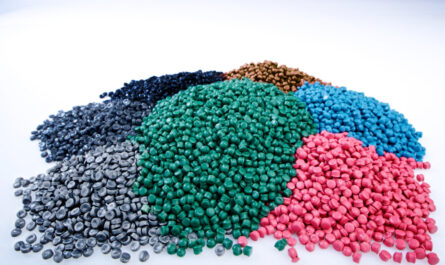Introduction to Titanium Nitride
Titanium nitride, often abbreviated as TiN, is an extremely hard ceramic and metal material that is commonly used in industrial coating applications. This goldish-colored compound consists of titanium and nitrogen in a 1:1 atomic ratio. When deposited as a thin film via physical or chemical vapor deposition processes, titanium nitride creates a very hard, wear-resistant surface.
History and Discovery of Titanium Nitride
While modern usage of Titanium Nitride Coating did not begin until the 1960s, the TiN compound itself was discovered much earlier. In 1863, German chemist Ferdinand Hurter and British chemist William Johnson first reported the synthesis of “titanium nitride” through direct reaction of titanium and nitrogen gases. However, its crystal structure and properties were not fully characterized until later in the 19th century by other scientists. It was not until the postwar era that materials scientists rediscovered TiN and began exploring its potential as a super-hard industrial coating.
Properties and Characteristics of Titanium Nitride
Due to its crystal structure and bonding arrangement between titanium and nitrogen atoms, TiN has some remarkable material properties that have made it popular for a wide variety of applications. Here are some of its key characteristics:
– Hardness: Rated between 2500-3000 on the Vickers hardness scale, TiN is considered a super-hard material. This is harder than chromium carbide and enables it to resist wear and abrasion.
– High temperature stability: TiN is stable at high temperatures, with a melting point around 3000°C in vacuum. This thermal stability allows it to maintain its protective properties even under high heat industrial conditions.
– Low friction coefficient: When deposited as a smooth thin film, TiN has a very low coefficient of friction similar to that of graphite. This quality diminishes wear on contacting tool and workpiece surfaces.
– Electrical conductivity: Unlike other ceramic coatings, TiN is electrically conductive with a resistivity around 20 μΩ-cm. This facilitates its use on electrical contact components and heat sinks.
– Chemical inertness: Titanium nitride is quite inert and resistant to corrosion from acids, alkalis and aqueous solutions. It does not readily oxidize at high temperatures either.
– Aesthetic golden color: The golden or silvery color of crystalline TiN coatings provides an aesthetically pleasing visual effect on precision parts.
Industrial and Commercial Applications of Titanium Nitride Coatings
Due to this unique blend of material properties, titanium nitride finds usage across many industries for applications that require wear/abrasion resistance, low friction or a decorative metallic appearance:
Cutting Tools
– Coating on high-speed steel, carbide and ceramic cutting tools drastically extends their lifetime and enables higher cutting speeds. The hardness of TiN protects tool edges from wear.
Decorative Purposes
– TiN is commonly used to gold plate jewelry, watches, eyeglass frames and other precision parts for its shiny golden aesthetic. The thin film adds no bulk but durable decorative properties.
Engine Components
– piston rings, valves and other auto/machinery parts employ TiN for its low friction and high temperature capability under extreme combustion chamber conditions.
Medical Equipment
– surgical instruments, dental tools and implant components use biocompatible TiN coatings due to high hardness, wear resistance and corrosion immunity qualities.
Optoelectronics
– TiN serves as an optical coating and conductive layer in applications like camera sensors, semiconductor chips and flat panel displays.
Other Uses
– heat exchangers, molds, dies, gauges, nozzles and various mechanical components employ TiN where conductivity, temperature durability and low friction are important characteristics.
Titanium Nitride Coating Processes
There are a few key thin film deposition techniques used to apply the protective titanium nitride coating:
Physical vapor deposition (PVD) is a common line-of-sight vacuum coating method. In PVD-TiN, titanium is evaporated from a target using an arc-source and reacted with nitrogen gas to deposit the nitride coating in crystalline form.
Chemical vapor deposition (CVD) is an alternative method where titanate and nitrogen-containing gases like titanium chloride and ammonia react on a heated substrate surface under controlled vacuum conditions. The CVD process allows for more uniform coating of complex geometries.
Some manufacturers also offer hybrid arc/ion plating variants of PVD-TiN for enhanced properties. Additionally, specialized techniques like pulsed laser deposition are being explored for next-gen TiN coatings. Proper substrate surface treatment and post-coat annealing can further optimize the coating adhesion, density and performance.
Conclusion
Ever since its rediscovery in the 1960s, titanium nitride has become an indispensable industrial material primarily due to the unique hardness, wear resistance and temperature stability conferred by its nitride crystal structure. Even with new alternative coatings entering the market, the versatile TiN compound continues holding strong across diverse applications that subject precision components to extreme mechanical and thermal stresses. When deposited as protectve thin films, titanium nitride coatings provide long-term, cost-effective solutions to improve product lifespan, productivity and surface aesthetics. Their superhardness, biocompatibility and electrical conductivity attributes have cemented TiN’s reputation as an industrial workhorse material.
*Note:
1. Source: Coherent Market Insights, Public Source, Desk Research
2. We have leveraged AI tools to mine information and compile it.



